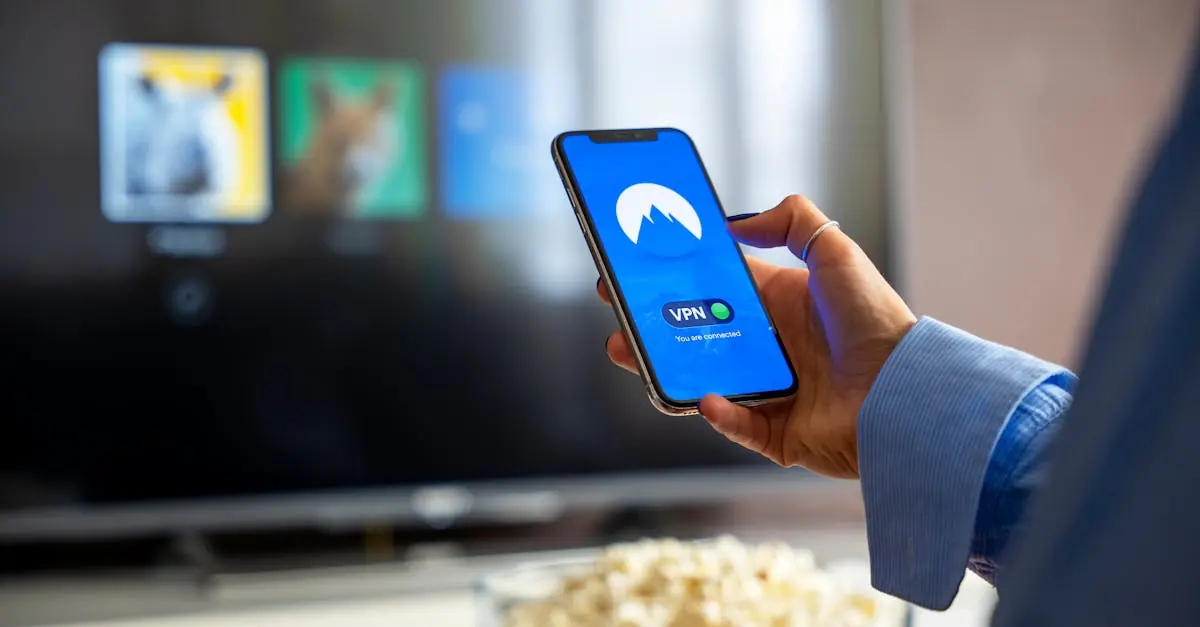In a world where privacy feels like a luxury, hiding apps on your phone can be a game changer. Whether it’s to keep nosy friends at bay or to reclaim some screen space from that endless parade of icons, mastering the art of app concealment is a skill worth having. Imagine the look on your buddy’s face when they can’t find that one app you just know they’d judge you for.
Table of Contents
ToggleUnderstanding The Need To Hide Apps
Hiding apps promotes privacy by allowing users to conceal sensitive information from others. Many individuals prefer to protect personal data from intrusive friends or curious family members. An organized home screen enhances the overall user experience, making important applications easily accessible while minimizing clutter.
Discretion remains a key factor for many people who own devices. Some prefer to keep certain apps hidden, especially those that could attract judgment or unwanted attention. Concerns about confidentiality often lead users to seek strategies for hiding apps on their phones.
Reducing distractions can improve focus and productivity. Users can tailor their device’s interface to better serve their needs by hiding unnecessary or rarely used applications. A minimalist approach fosters an environment that aligns more with an individual’s priorities.
Security continues to gain importance as personal data increasingly becomes a target. Relying on app concealment can provide an additional layer of security against unauthorized access. Privacy-conscious users take proactive steps to safeguard their digital lives.
Overall, the practice of hiding apps proves beneficial for various reasons. Whether it’s about maintaining privacy, organizing the interface, or enhancing focus, understanding these needs supports informed decisions on app management.
Methods For Hiding Apps
Hiding apps can simplify a device and enhance privacy. Several methods exist to conceal applications effectively.
Native Phone Features
Many smartphones include built-in options for hiding apps. Users with Android devices can access the app drawer, tap on the three dots, and select “Hide apps.” iPhone users can create folders or move apps to secondary home screens. Users may also take advantage of “Screen Time” to restrict access to certain apps by setting app limits. Custom launcher applications give Android users more control over their home screens, enabling them to create a completely customized look. Utilizing these features provides a seamless approach to keeping apps unseen.
Third-Party Applications
Various third-party apps can assist in hiding applications. App lock tools enable users to protect sensitive apps with passwords or biometrics. Launchers like Nova Launcher or Apex Launcher allow users to hide apps from the app drawer. Users might also consider specialized applications designed to cloak apps behind secure vaults. It’s essential to explore permissions and features before installation, ensuring safety and functionality. Such options offer flexibility and creativity in managing app visibility on devices.
Step-By-Step Guide On How To Hide Apps On Your Phone
The process varies slightly between Android and iOS devices. Each platform offers unique features for app concealment.
Android Devices
Android users can easily hide apps with built-in features. Access the app drawer by swiping up on the home screen. Tap the three-dot menu in the top corner, then choose “Home screen settings.” Look for the “Hide apps” option and select the apps to conceal. Another option includes using custom launchers available on the Google Play Store. Apex Launcher and Nova Launcher allow for even more extensive app management. Install the launcher, configure settings, and choose which apps to hide from view. These methods optimize the Android user experience, creating a cleaner and more organized environment.
iOS Devices
iOS devices provide several methods for hiding apps. Users can create folders by long-pressing the home screen until apps jiggle. Drag apps into a folder, then move it to a different page or screen. This method effectively minimizes visibility. For further concealment, enable “Screen Time” in settings, allowing for restrictions on certain apps. Navigate to “Content & Privacy Restrictions,” select “Allowed Apps,” and toggle off access to specific applications. Another option includes using the App Library, which stores apps out of sight while keeping them accessible. With these techniques, iOS users can manage their app visibility efficiently.
Tips For Managing Hidden Apps
Organizing hidden apps enhances overall device functionality. Start by regularly reviewing the list of concealed applications to ensure their relevance. Consider creating themed folders to group similar apps, making them easier to find when needed.
Utilizing app lock tools adds an extra layer of security. These tools not only hide apps but also restrict access through passwords or biometric verification. Implementing this feature keeps sensitive information more secure from unwanted access.
Keeping a record of hidden apps helps avoid frustration. Jot down the names of concealed applications in a secure note, ensuring easy retrieval when necessary. This practice minimizes the risk of forgetting about apps entirely.
Prioritizing important apps prevents crucial tools from being lost in the shuffle. Maintain a balance between hiding less significant applications and ensuring that essential ones remain easily accessible. Regularly update this balance based on changing needs or app usage patterns.
Leveraging built-in features of smartphones can simplify management. Android offers options like the app drawer, while iOS provides the App Library for straightforward access to hidden apps. Familiarizing oneself with these built-in options can streamline the user experience.
Enabling location-based notifications keeps app usage relevant. Apps can remain hidden but still send alerts based on geographical triggers. This feature allows users to stay informed without cluttering their home screens.
Maintaining a minimalist approach fosters clarity. Streamlining both visible and hidden apps creates a cleaner digital environment that promotes focus and reduces distractions. Always prioritize what truly enhances the user experience.
Hiding apps on a phone is more than just a simple trick; it’s a powerful way to enhance privacy and streamline the user experience. By keeping sensitive applications out of sight, users can protect their personal information while enjoying a more organized home screen.
The various methods available for concealing apps cater to different preferences and needs, making it easy for anyone to find a solution that works for them. Regular management of hidden apps ensures that essential tools remain accessible while minimizing distractions.
Ultimately, adopting a minimalist approach not only fosters clarity but also supports better focus and productivity. By taking control of app visibility, users can create a digital environment that aligns with their priorities and enhances their overall smartphone experience.





